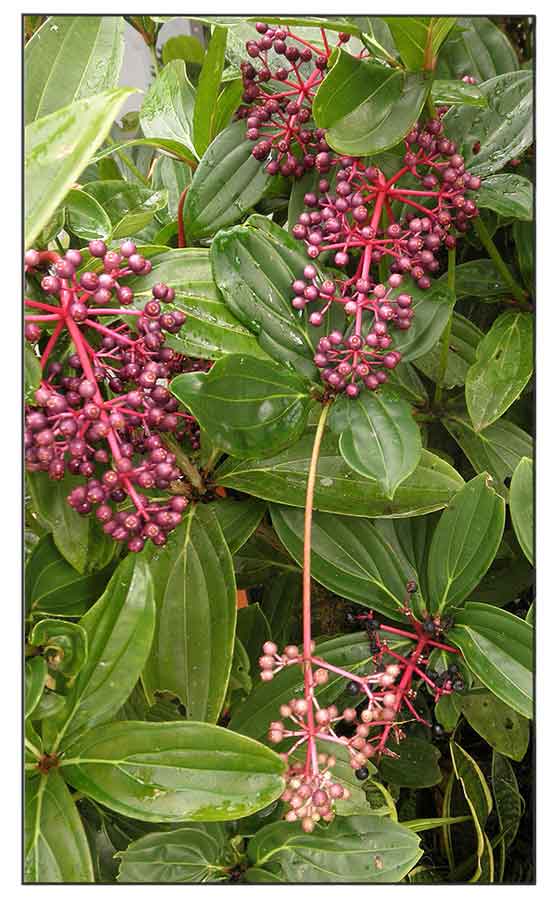
Family • Melastomataceae
Agubangbang
Medinilla pendula Merr.
CHANDELIER MEDINILLA
| Scientific names | Common names |
| Medinilla elmeri Merr. | Agubangbang (Igorot) |
| Medinilla gitingensis Elmer | Balanban (Igt.) |
| Medinilla merrillii Merr. | Ballangbang (Igt.) |
| Medinilla pendula Merr. | Gubangbang (Igt.) |
| Medinilla subsessilis Merr. | Chandelier medinilla (Engl.) |
| Pendulous medinilla (Engl.) | |
| Salacca zalacca (Gaertn.) Voss is an accepted name. KEW: Plants of the World Online | |
Botany Distribution Constituents Studies Availability |
Nov 2023
![]()
 |
| PHOTOS / ILLUSTRATIONS |
| IMAGE SOURCE: Melastomataceae / Medinilla pendula / Infuctescences and leaves / Copyright © 2013 by D L Nickrent (contact: dn277@cornell.edu) [ref. DOL74301] / Non-Commercial Use / image modified / click on image or link to go to source page / Phytoimages.siu.edu |
Additional
Sources and Suggested Readings |
• |
DOI: It is not uncommon for links on studies/sources to change. Copying and pasting the information on the search window or using the DOI (if available) will often redirect to the new link page. (Citing and Using a (DOI) Digital Object Identifier) |
| List of Understudied Philippine Medicinal Plants |
| New plant names needed The compilation now numbers over 1,400 medicinal plants. While I believe there are hundreds more that can be added to the collection, they are becoming more difficult to find. If you have a medicinal plant to suggest for inclusion, native or introduced, please email the info: local plant name (if known), any known folkloric medicinal use, scientific name (most helpful), and, if possible, a photo. Your help will be greatly appreciated. |
• |
 |

 Gen info
Gen info